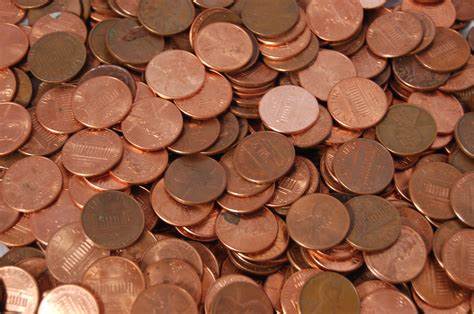New and trendy holiday traditions may be all the rage, but when it comes to New Year's Eve, some customs are deeply rooted in history, dating back centuries to ancient Babylon. Over the 4,000 years since, many traditions have come and gone, yet one thing remains: our love for marking the transition from one year to the next with ceremony and a touch of New Year's superstition.

For those seeking novel ways to celebrate with their families, here are some global New Year's Eve traditions, many of which revolve around food, promising prosperity, longevity, and abundance for the year ahead. Others focus on maximizing luck and warding off misfortune through lucky charms, rituals, and specific attire. Some even gaze into the future for signs of what's to come, with pigs often playing a central role.
Whether these are factual New Year's tidbits or delightful fiction, consider adopting one to kick off the year on a lucky note!
Watching the Ball Drop: A Time-Honored Countdown

One of the most iconic New Year's Eve traditions is the ball drop in New York City's Times Square, which has been a staple since 1907. This year's ball, a geodesic sphere, spans 12 feet in diameter, weighs 11,875 pounds, and is adorned with 2,688 Waterford Crystal triangles, illuminated by 32,256 LEDs. While it's the most famous, it's not the only object to drop; Atlanta, GA drops a giant peach; Plymouth, Wisconsin, a Big Cheese; Kennett Square, PA, a great mushroom; and New Orleans, a fleur de lis. Regardless of the symbol, it creates a dramatic countdown.
Eating 12 Grapes: A Spanish Superstition
In Spain, it's customary to eat one grape at each chime of midnight, ensuring good luck for the coming year—provided you chew and swallow quickly and ruminate on their significance. Failing to finish your grapes by the final chime is said to bring misfortune.
Jumping Waves: A Brazilian Belief

In Brazil, it's believed that jumping over seven waves on New Year's Eve will increase your luck, with each wave representing a divine spirit of the Umbanda religion. Each wave also grants a wish, encouraging even the most reluctant to take the plunge.
Mistletoe Dreams: An Irish Charm
In Ireland, placing mistletoe, holly, or ivy under your pillow on New Year's Eve is said to bring dreams of your future partner, providing a romantic reason to stay up all night.
Decorating with Onions: A Greek Custom
Greeks hang onions above their doors to invite good luck, symbolizing prosperity due to their ability to sprout unnoticed. On New Year's Day, parents wake their children by tapping them with the onions, a tradition layered with meaning.
Wearing White: A Brazilian Preference
Brazilians wearing white on New Year's Eve is a tradition symbolizing good luck and peace, creating a coordinated and photogenic celebration.
Making Hoppin' John: A Southern Specialty

Hoppin' John, a dish of black-eyed peas, pork, and rice, is believed to bring luck, peace, and prosperity when eaten on January 1. Often served with collard greens and cornbread, some add a penny under the dish or extra pork for extra luck. For a twist, try using our Green Tea Barbecue Rub on the pork for a smoky, healthy flavor that's sure to be a hit at your New Year's gathering.
Jumping into the New Year: A Danish Leap
In Denmark, standing on a chair and leaping into January at midnight is believed to bring good luck, a tradition not to be forgotten.
Making Resolutions: An Ancient Practice
The concept of New Year's resolutions dates back over 4,000 years to the Babylonians, who made promises to pay debts or return borrowed items. If they could do it, so can you.
Giving More Gifts: A Soviet Tradition
In Soviet Russia, where Christmas was forbidden, New Year's became the main gift-giving holiday. Presents were delivered by Ded Moroz, or Father Frost, and his granddaughter, Snegourochka.
Kissing a Loved One: A Midnight Moment
Kissing someone you love at midnight is not just a romantic gesture; it's believed to dictate the year's destiny, so choose your partner wisely.
Eating Round Foods: A Global Belief Many cultures believe eating round foods, symbolizing coins or money, leads to prosperity. In Italy, lentils serve this purpose, while the Philippines customs include eating 12 round fruits for each month of the year.
Dressing in Dots: A Philippine Tradition
In the Philippines, wearing polka dots on New Year's Eve is believed to increase chances of good luck and fortune.
Buying a New Lucky Charm: A German Gesture
In Germany and Austria, gifting lucky symbols like pigs, lucky pennies, horseshoes, and clovers is believed to bring good fortune. Edible versions in marzipan are a sweet alternative.
Banging Bread on Walls: An Irish Ritual
Irish tradition involves banging Christmas bread on walls to chase away bad spirits, starting the new year afresh. Cleaning up afterward is also an Irish custom.
Color-Coded Underwear: A Latin American Belief
In Latin America, the color of your underwear on December 31 is believed to influence the coming year. Yellow brings luck, red brings love, and white brings peace, as long as they're clean and hole-free.
Packing Light: A Colombian Custom
In Colombia, running around the block with empty suitcases is believed to guarantee a year of travel. One writer's experience suggests it might just work!
Making a Fish Dish: A Symbolic Choice
Fish, swimming forward like the movement of time, is considered a good New Year's entrée, symbolizing progress into the new year.
Keeping Windows Open: A Global Superstition

Opening doors and windows is believed to let the old year out and the new year in unimpeded, as long as you don't mind the draft.
Smashing the Peppermint Pig: An Upstate New York Delight In upstate New York, hitting a peppermint pig with a candy hammer and eating a piece is said to bring good fortune. Just be mindful of the strong flavor and eat in moderation.
Trying to Predict What'll Come Next: A German Tradition Bleigießen, or lead pouring, is a tradition where melting lead (now tin or wax) and pouring it into cold water reveals the shape, predicting your fortune for the year ahead.
Smashing a Pomegranate: A Turkish Symbol
In Turkey, pomegranates symbolize abundance. Smashing them on doorsteps ensures a prosperous year, with the pieces spreading further and wider for greater wealth.
Singing "Auld Lang Syne": A Time-Honored Song
"Auld Lang Syne," attributed to Robert Burns, is an old folk song transcribed by the poet. Learning all ten verses can impress your party guests.
Hiding a Surprise: A Greek Game
Vasilopita, a cake or sweet bread with a coin inside, is a Greek New Year's dessert that brings good luck to whoever finds the coin. Scandinavian rice pudding with a hidden almond serves a similar purpose.
Throwing Water Out the Window: A Puerto Rican Ritual
In Puerto Rico, dumping water out the window is believed to drive away evil spirits. To invite good luck, sugar is sprinkled outside houses for a sweeter welcome.
Grabbing a Potato: A Colombian Custom
In Colombia, placing three potatoes under each family member's bed (one peeled, one half-peeled, and one unpeeled) predicts the financial year. Grabbing one in the dark reveals the year's financial outlook.
Burning the Old Year: An Ecuadorian Ritual
In Ecuador, "año viejo" effigies are burned to cleanse the bad parts of the old year. Jumping over the flames 12 times brings extra good luck.
Taking a Dip: A Polar Bear Plunge Since the early 1900s, the Polar Bear Plunge has been a tradition of submerging in cold water on January 1, often raising money for local nonprofits.
Inviting the First Guest of the New Year: A Scottish Tradition The "first footer" in Scotland and Northern England was believed to set the tone for the year. A tall, dark man with gifts of coal, salt, shortbread, and whisky was considered lucky.
Singing for Candy: A Norwegian Treat Nyttarsbukk is a Norwegian tradition where children sing New Year's Eve songs door-to-door in exchange for sweets, combining caroling and trick-or-treating.
Turning Lemons Into Pigs: A Symbol of Prosperity
Lemons are turned into piglets to symbolize wealth, displayed with cloves for eyes, toothpicks for feet, and a penny in the mouth for extra luck.
Spice Up the Champagne In Russia

Champagne gets an extra ingredient on New Year's: Revelers write a wish down on a piece of paper, burn it and add the ashes to the drink. It all has to be done before the first and last stroke of midnight, too. Bottoms up!
